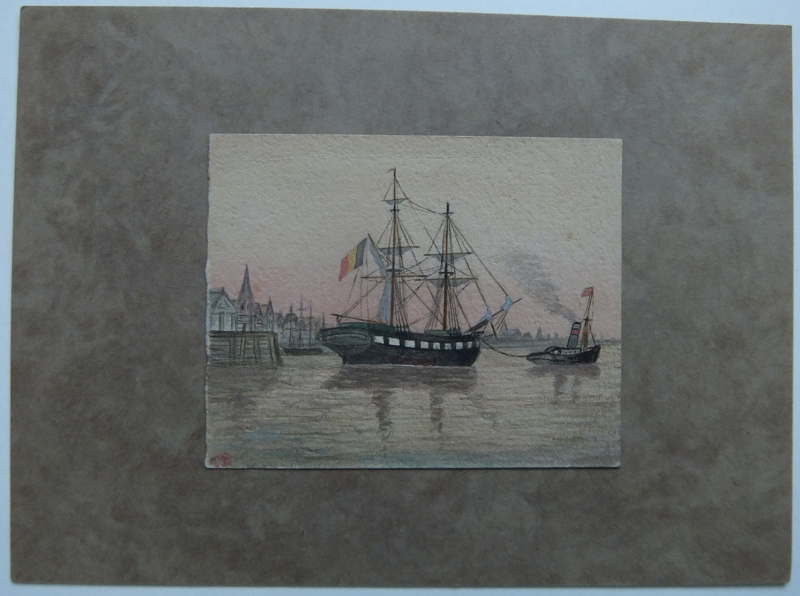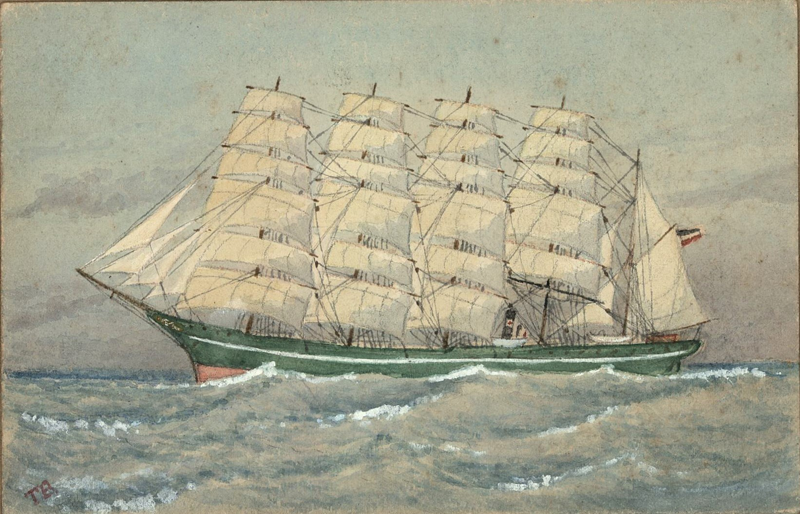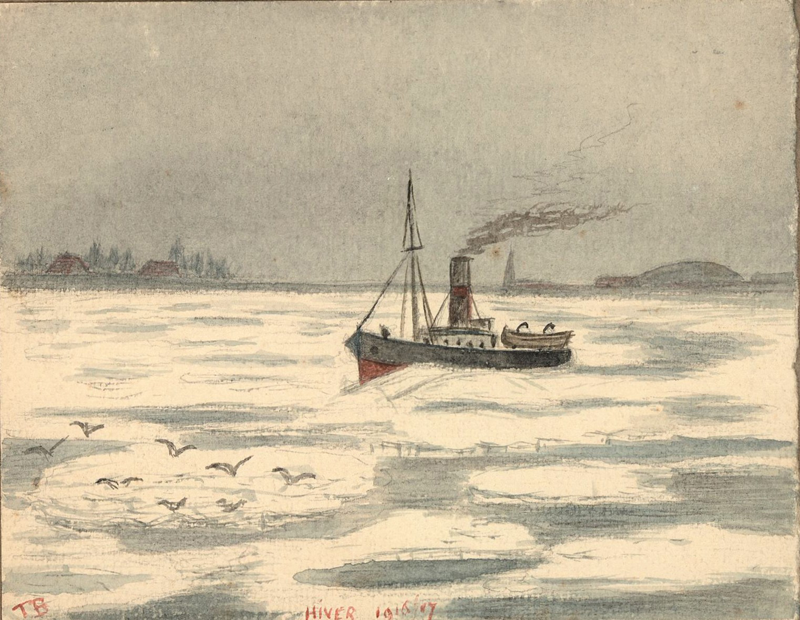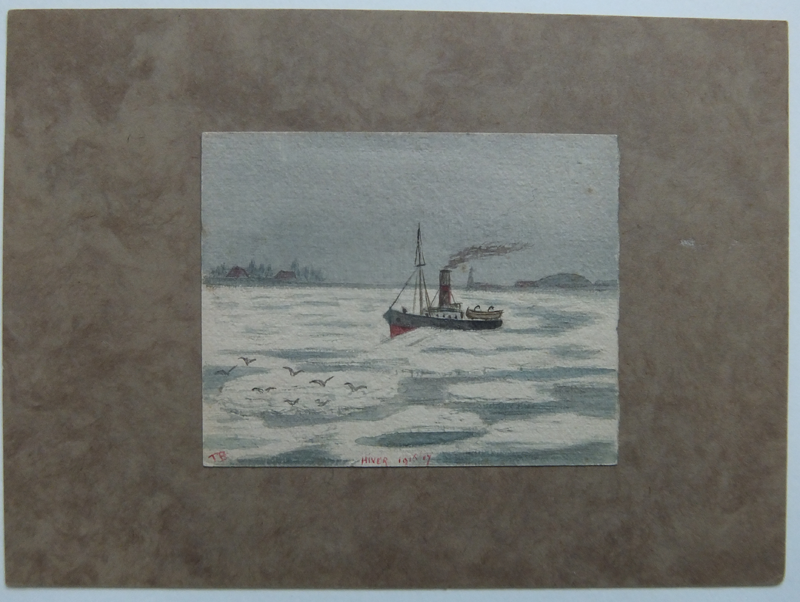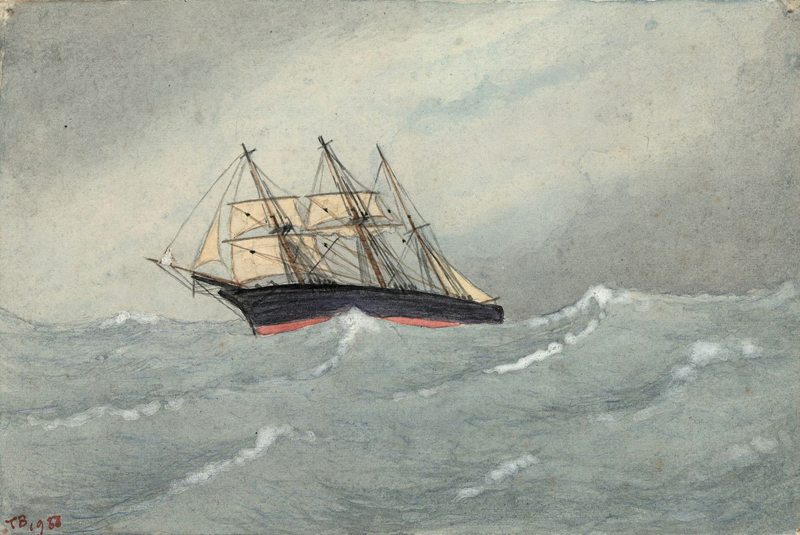Seafaring was not only an exploit — but a muse — inspiring many a doodler and artiste alike to procure their paint and brushes. Though clearly monogrammed, the person who painted these whimsical ship watercolours remains somewhat of a mystery.
by Caitlin Greyling
Vessels of all shapes and sizes were a common sight in ports across Europe through the ages, for sure — making them ideal fodder for artists just like “T.B.” Whether our unknown painter was a seafarer, boat owner, or simply an admirer remains to be uncovered.
Certainly, moving water, light, reflections, rigging, paintwork, and those other tiny details are all unique and rewarding subjects to capture. One of the most striking features in each of this collection of four small 20th-century watercolours is the lighting. Though amateur, the budding talent of T.B. cannot be denied!
Clearly not motor-powered, this Belgian schooner needs a little help navigating out of port safely while not yet under sail.
Our first watercolour is a rather delightful glowing sunset or sunrise scene. Most likely, the former if the ship was docking or mooring — or the latter if it was heading out to sea. As a sailboat, it was unlikely to have been equipped with a motor or steam engine. Luckily, a little tugboat has been enlisted to help it slip gracefully and safely through. Considering the choice of maritime flag, is it possible that our artist was also Belgian?
A Rare 5-Masted Schooner Under Sail
5-masted ships are few, but most modern iron-clad versions debuted at the turn of the 20th century. Yes, around the time our artist illustrated this impressive schooner! The most famous amongst them included the Preussen, Royal Clipper, and Potosi, cutting formidable figures through the water — especially while under sail.
Also a five-masted schooner with a gaff-rigged back sail, Hamburg’s Potosi seems the likely inspiration for this illustration.
A Lonesome Tug Returns to Port
Our friendly tug makes a second appearance, warranting a passing thought that it may be a real boat — not simply imaginary.
Steam engines were installed in boats as early as the late 1700s. However, many older vessels still relied solely on sails to get them from point A to B. As a result, mooring or anchoring in ports could be a tedious, complex, and dangerous affair in the 19th and 20th centuries.
Some ships employed techniques like towing or warping. Or simply had to anchor further away — especially if the harbour or port was particularly shallow or narrow. All that changed with the introduction of the petite, steam-powered tug boat. Perhaps hence why one is always a friendly sight!
A Barque Rides Out the Waves
The level of light and movement the artist has managed to capture in this watercolour is quite enrapturing. Dated 1938, it is a later attempt than two of the other illustrations dated 1916/17.
Sailing the seas wasn’t all exploration, loot, and glory. Most sailors were accustomed to the perils and discomforts of the ocean. Rocking and the associated sea sickness, loss of cargo, men overboard, and injuries are probably the last things most sailors wish to remember. Yet, our artist has done a stellar job of illustrating just that scene. You can almost imagine being on this barque as it suddenly lurches sideways in the swell.
Who Is T.B.?
Clues can be found amongst the scenery, including the maritime flags chosen and inscriptions (“Hiver”). Each artist also has their own style and signature — but is it enough to find T.B.? Let us know if you have any clues as to the artist’s true identity!




